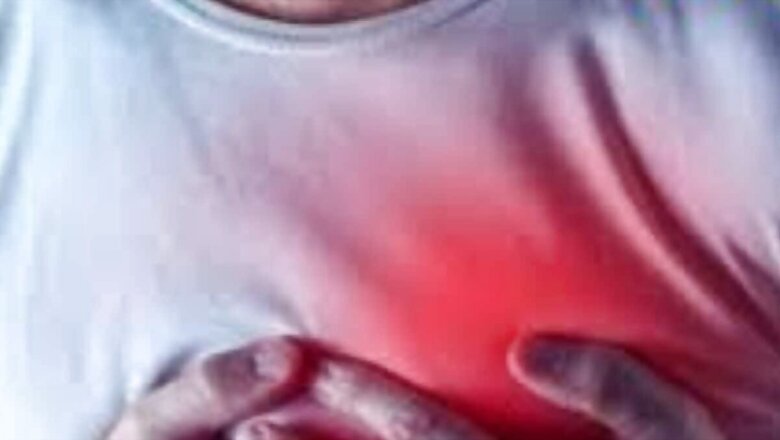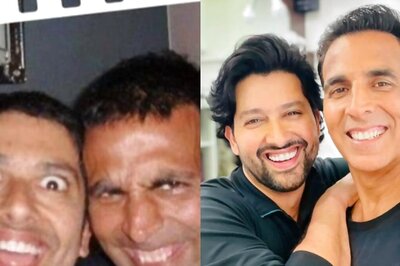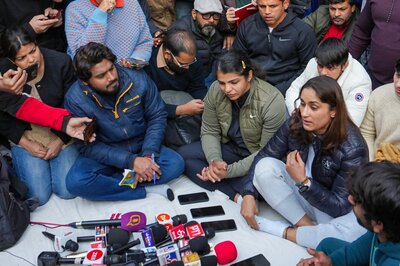
views
The incidence of stroke cases is rising both globally and in India, creating an urgent need for effective rehabilitation strategies. Post-stroke rehabilitation is crucial not only for improving patient outcomes but also for reducing their dependence on caregivers. By focusing on comprehensive rehabilitation, patients can achieve greater independence and a better quality of life.
The Role of a Multidisciplinary Approach
Dr Gaurish Kenkre, General manager and Center Head, Atharv Ability – Neuro Rehabilitation Centre, says “A multidisciplinary approach for post-stroke neurological rehabilitation is important to enhance patient outcomes. By integrating various therapies such as physical therapy, neuro physiotherapy, occupational therapy, speech therapy, cognitive behavioral therapy, and pain management, patients receive holistic care that addresses multiple aspects of recovery. This comprehensive strategy ensures that all physical, emotional, and cognitive needs are met, leading to a more complete and effective recovery process.”
Physical and Neuro Physiotherapy
Physical therapy and neuro physiotherapy are fundamental components of neuro rehabilitation. These therapies focus on improving mobility and motor function, especially for the legs, gait, arms, hands, and fingers. “Advanced techniques and robotic assistance can enhance these therapies, providing targeted exercises that help rebuild strength and coordination. Such interventions are crucial for patients to regain functional independence,” adds Dr Kenkre.
Simulated Activity of Daily Living (ADL) Training
Simulated ADL training is essential for helping stroke patients regain independence in their daily routines. “This training involves practicing real-life activities in a controlled environment, allowing patients to improve their practical skills and build confidence. By mastering everyday tasks such as dressing, cooking, and personal hygiene, patients can significantly reduce their reliance on caregivers,” shares Dr Kenkre.
Pain Management and Aquatic Therapy
Pain management and aquatic therapy play significant roles in stroke rehabilitation. Effective pain management strategies, including medications and therapies, help alleviate chronic pain that can hinder recovery. Aquatic therapy, which involves exercises performed in water, provides a low-impact environment that reduces stress on the body while improving mobility and strength. These therapies contribute to overall well-being and facilitate smoother rehabilitation.
Speech and Cognitive Behavioral Therapy
Speech therapy is critical for improving communication skills post-stroke. Many patients experience difficulties with speaking, understanding, and swallowing, which can be addressed through targeted speech therapy. “Cognitive behavioral therapy (CBT) is equally important, as it helps patients cope with emotional and psychological challenges that arise after a stroke. CBT can address issues such as depression, anxiety, and frustration, promoting a more positive outlook and better mental health,” explains Dr Kenkre.
Occupational Therapy
Occupational therapy helps stroke patients relearn essential skills needed for daily living and work. This therapy focuses on activities that enhance fine motor skills, coordination, and cognitive functions. By working on practical tasks, patients can regain the ability to perform their jobs and manage household duties, leading to greater independence and a sense of accomplishment.
Dr Kenkre, signs off, “A well-structured, multidisciplinary rehabilitation program is essential for reducing a stroke patient’s dependence on caregivers. By incorporating various therapies and focusing on comprehensive recovery, patients can achieve significant improvements in mobility, communication, emotional well-being, and daily living skills. Timely and quality care is crucial for enhancing long-term outcomes and enabling stroke patients to lead more independent and fulfilling lives.”


















Comments
0 comment